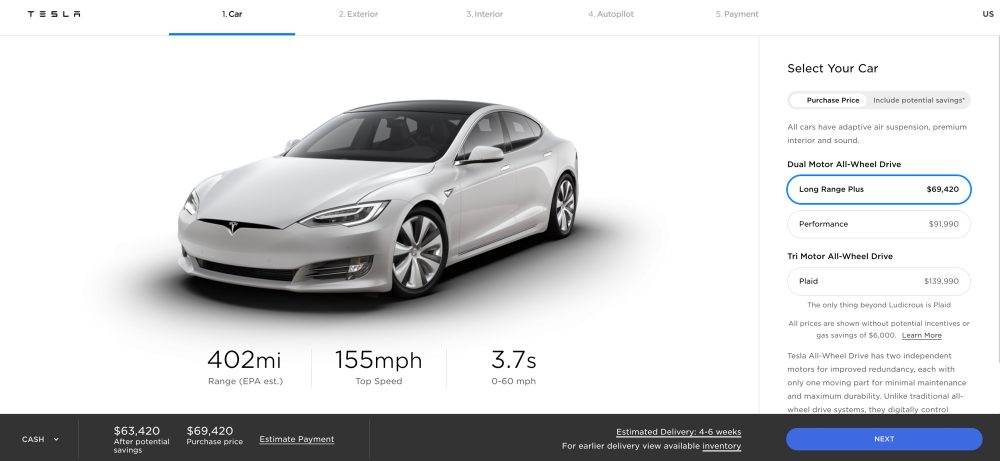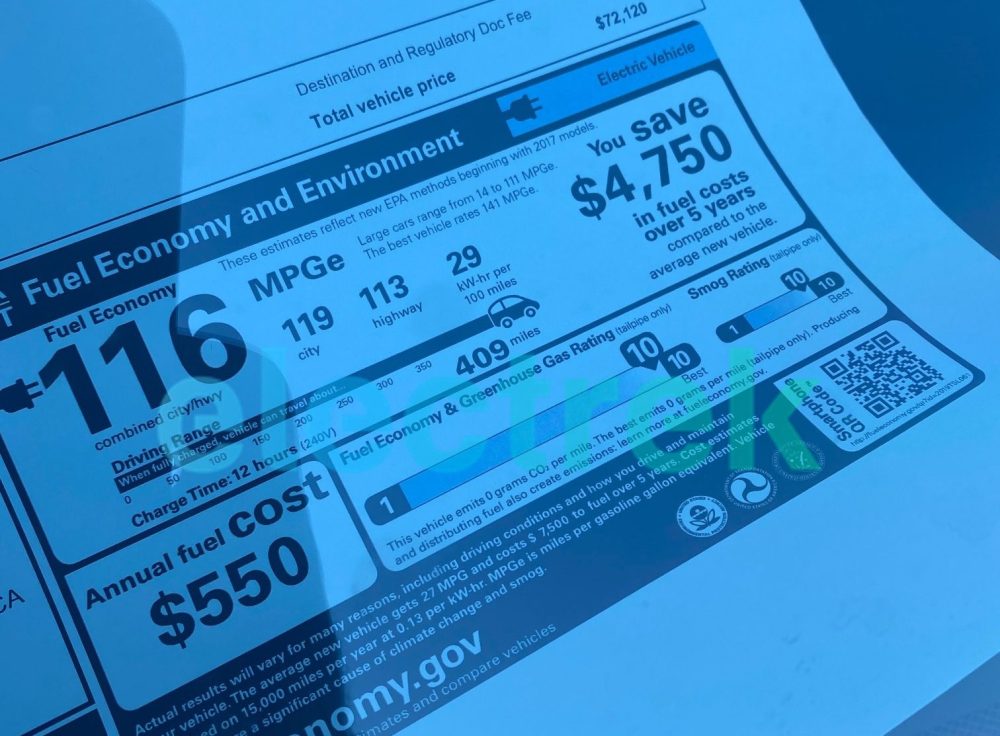
Tesla has again increased the range of the Model S electric sedan to a new record high.
It is again taking the lead in its range and price rivalry with Lucid.
Earlier this year, Tesla managed to increase the range of the Model S to 402 miles on a single charge – a new record for all-electric vehicles.
A few months later, Lucid unveiled the base version of its Air electric sedan with a range of 406 miles and a price competitive with Tesla’s Model S, which is expected to be its top competitor in the luxury sedan segment.
In response to the announcement, Tesla CEO Elon Musk said that Tesla will reduce Model S price to $69,420 – trolling Lucid in the process:

It officialized the rivalry between the two electric vehicle companies even though Lucid has yet to deliver its first vehicle.
Now Tesla is upping the antes again.
An Electrek reader found a brand new Tesla Model S produced this month and the Monroney sticker shows an updated EPA range of 409 miles on a single charge:

The Model S Long Range Plus had a build date in November 2020.
It’s unclear what is pushing the range to 409 miles or if it is based on software, hardware improvements or both.
The EPA has yet to update its website with the new rating, but if it made it to the Monroney sticker, it is a good indication that it is official. Tesla also hasn’t updated the range on its website.
Last month, Tesla gave Model S Performance a big increase in range, but the Long Range Plus wasn’t updated.
Electrek’s Take
Interestingly, the previous Model S Long Range with 402 miles of range had a combined 117 MPGe rating (City MPGe:121 – Highway MPGe:112) and the new Monroney sticker shows that the efficiency went down.
It now shows a combined 116 MPGe rating (City MPGe:119 – Highway MPGe:113).
Tesla improved the efficiency on the highway, but it went down for city driving.
Normally, if the efficiency goes down, but the range goes up, it means that Tesla increased the energy capacity of the battery – though we can’t confirm that for now.
Recently, we learned that Tesla upgraded the energy capacity of its Model 3 Long Range battery pack, but Model 3 doesn’t use the same battery cells as Model S.
Subscribe to Electrek on YouTube for exclusive videos and subscribe to the podcast.
Author: Fred Lambert
Source: Electrek



